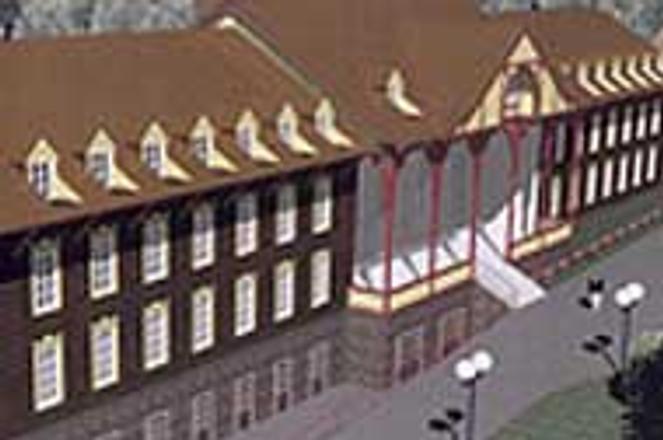An artist's impression of Ďumbier lodge after renovation.photo: Courtesy of Kreax
A car with a Hungarian license plate pulls slowly up to the white socialist-era building which houses the facilities of the modern Brusno spa, and then drives on. The car's passengers are drawn instead to the rustic beauty of a sagging wooden building off the main road, partially hidden by a grove of pine trees. Cameras are whipped out, and the eager tourists explore the overgrown paths that surround the once majestic center of the spa.
Scenes like this frustrate Eva Medvedová, the director of the Brusno Spa, located 20 km outside the central Slovak city of Banska Bystrica. The spa's current facilities are functional, but lack charm, and do not attract many visitors; the spa's decaying former quarters could be a magnet for tourists, but no one has enough money to renovate them.
"Tourists want to stay in beautiful human places, not cold impersonal boxes," lamented Medvedová.
For Medvedová, reconstruction of the original buildings - the Dumbier lodge and the Vepor curing facility/hotel - is vital if the spa is to attract foreign guests and survive in the future. "We have to find a way to do this, and our best option is to work with a foreign investor," she said.
The Kreax architecture firm from Banská Bystrica estimates the reconstruction of the two buildings at 100 million Slovak crowns ($2.3 million); 60 million crowns for Dumbier, which suffers from structural faults like poor foundations, and 40 million crowns for Vepor.
But a Slovak law barring foreigners from owning buildings or land represents a major hurdle to attracting a foreign investor. Furthermore, because the buildings are national cultural monuments, they cannot be sold. The Brusno spa currently administers the buildings, while its ownership rights are in dispute.
"This is a complication," admitted Medvedová. "But it is possible rent the buildings to an investor for 10-15 years while we would run the operation. Profits during this time would go to the investor."
Naďa Haberová, the deputy director of the Snazir investment agency, said that complications had indeed made investors something of a rarity in the Slovak spa industry. No foreign investors actually owned any spa shares, while only one Austrian firm was currently interested in acquiring a stake. Fifty Slovak hotels have foreign partners.
"As a foreign physical person, there is no way you can buy property in Slovakia," she said. "What you can do is to establish a joint stock or a limited liability company as a Slovak company, and then transfer shares to the foreign partner. But everything depends on the municipalities and whether investors win tenders to restructure."
Dumbier can hold 90 beds and Vepor 80, which according to Medvedová means that an investor would start to see a return on investment after five years.
Medvedová said that she had explored financing the reconstruction with a bank loan, but explained that the 25% interest rate she had been quoted by a domestic bank made the idea unfeasible. "Banks are completely unrealistic in their demands," she said.
The Brusno spa is owned by a collection of private concerns who collectively hold a 51% share. The rest is owned by insurer Všeobecná zdravotná poisťovňa (20%), the FNM national privatization agency (16%), the local municipality (10%) and the national restitution fund (3%).
Visitors have been attracted to the spa since the late 19th century for both the curative mineral waters and the thermal springs that flow from many surface and subterranean outlets. Patients who suffer from gall-bladder, kidney, pancreatic and circulatory diseases are treated at the spa. Most treatments are based on doses of the local mineral water and bathing in the hot baths.
"The spa is really challenging to run," mused Medvedová. "It is everything from a spa to a hospital, hotel, entertainment centre and clinic." Most visitors hail from nearby Poland, Hungary and the Czech Republic as well as Belarus and Russia. The spa is counting on a 70 million crown ($1.6 million) turnover for 1999, of which 10% will be reinvested into renovation of the modern spa facility.


